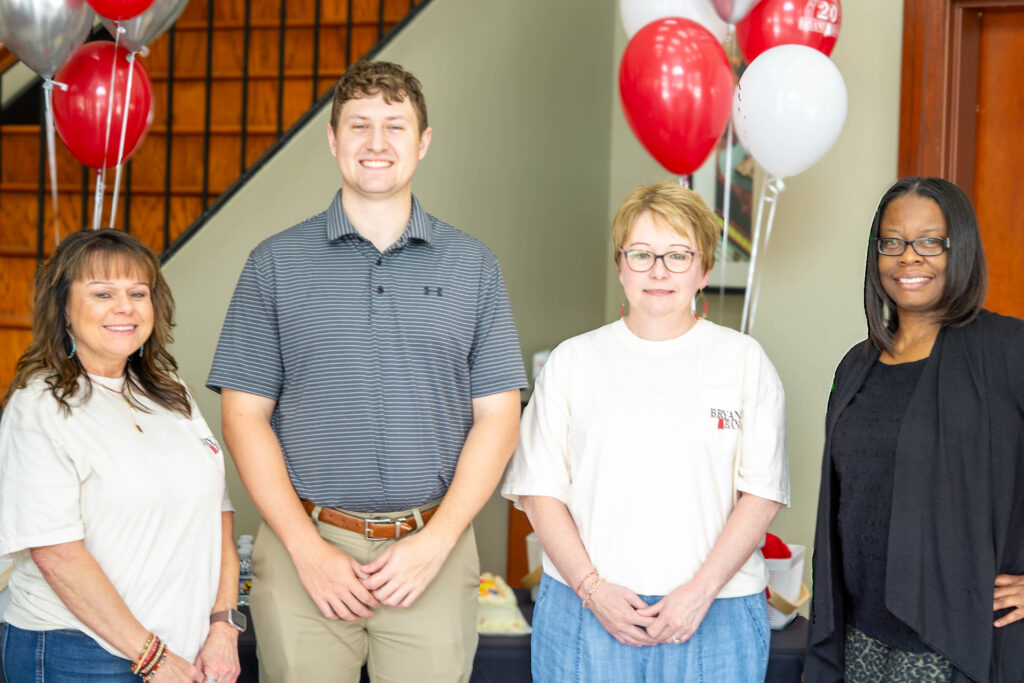Archeologists discover new artifacts at Florence’s Pope’s Tavern Museum
Reading time: 4 minutes

Earlier this year, a state-funded team of archeologists uncovered a number of artifacts, including pieces of pottery, glass and nails, at the historic Pope’s Tavern in Florence. Keep reading to learn more about the discovery!
What is Pope’s Tavern Museum?

Pope’s Tavern Museum, located in beautiful downtown Florence, Alabama, is a historic inn & stagecoach stop. Although the original building burned down, the current structure dates back as early as the 1830s.
A plaque in front of the museum reads:
Pope’s Tavern Museum is housed in a building that dates back to the early 1800s. According to legend Christopher Cheatham built and operated a tavern on this site for Leroy Pope in 1811. This was seven years before the founding of Florence in 1818. Archeological evidence suggests that the original was burned. Apparently part of the building was erected in the 1820s. Since that time there have been numerous structural changes to meet changing needs for the building. While no firm evidence exists that this building was a tavern, there are several reasons to believe the legend. The present structure is certainly one of the oldest buildings in Florence and a prominent historical site.
At various times the building served as the home of prominent families including Charles Gookin, a businessman and City Alderman, and Josiah Patterson, a prominent lawyer and his son, who later became governor of Tennessee.

During the Civil War the house was used as a hospital by Union and Confederate armies. It was first used as a hospital shortly after the Battles of Fort Henry and Fort Donelson and remained in fairly constant use after early 1862. Thirty-two soldiers died in the house and were buried in the old Florence Cemetery.
Felix Grundy Lambeth, a postmaster in Florence, bought the house in 1874. It was occupied by the Lambeth family until 1965. When rumors circulated that the house was to be demolished, the Chamber of Commerce purchased the property and gave it to the City of Florence. The deed stipulated that the City would maintain and preserve the building as a historic site and that it would be used as a museum. After extensive renovation of the building by the City and an exhaustive search for appropriate artifacts, the Pope’s Tavern Museum was opened to the public in 1968.
Today, Pope’s Tavern functions as a museum, helping to tell the history of the area from the 1800s to present day. In fact, the museum contains several one-of-a-kind artifacts, including a rare Kennedy Long Rifle and a vertically-strung piano—one of only four ever made!
New Artifacts Unearthed

In summer 2021, a team of archeologists from the University of Alabama’s Office of Archaeological Research organized an excavation of several spots on the grounds of Pope’s Tavern Museum. The project, which was funded by a Historic Sites Grant from the Alabama Historical Commission, discovered a number of artifacts during the excavation, including fragmented pottery, glass, nails and even remains of a long-lost brick structure.
According to the archeologists and Pope’s Tavern Museum, some artifacts date back before the construction of Pope’s Tavern—and some are older than the State of Alabama itself!
Although the excavation process has ended, archeologists are currently cleaning and analyzing the artifacts to help get a better grasp on the history of the area.
Excited to learn more about this archeological find? Be sure to follow Pope’s Tavern Museum on Facebook!







